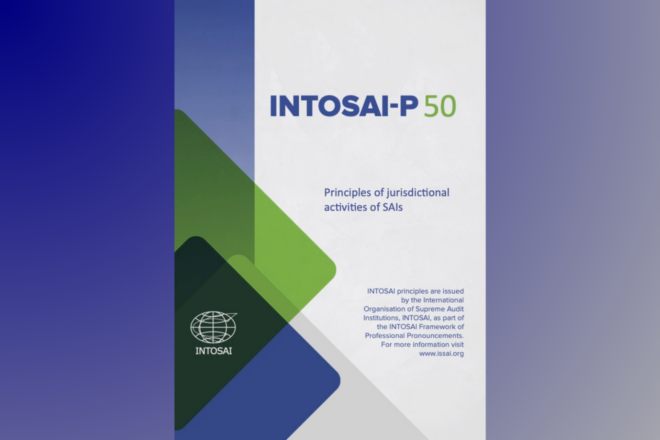By Gilles Miller, Senior auditor and liaison officer of the Forum of jurisdictional SAIs at the French Cour des comptes
At its General Assembly in Lisbon, Portugal in September 2021, the Forum of Jurisdictional SAIs adopted a set of guidelines designed to publicize and promote the exercise of jurisdictional and contentious missions by SAIs vested with this competence. These guidelines provide and illustrate in very concrete terms the frame of reference for this exercise in conditions of independence, objectivity or neutrality, legal rigor, public interest and fairness in line with the highest international standards.
The purpose of these guidelines is to support SAIs with jurisdictional competencies in developing or implementing the twelve principles set out in INTOSAI-P 50, relating to the specific environment for the activities of SAIs with such a mandate. It took almost a year to develop these guidelines, based on detailed responses to a questionnaire sent to about forty SAIs. Based on the accumulated experience of these SAIs and a comparative observation of their organization and procedures, it was possible to draw up a general framework for action, under the banner of the “highest common denominator”.
These guidelines primarily concern jurisdictional SAIs (or SAIs with jurisdictional powers), i.e., as defined by INTOSAI-P 50, those mandated to directly question the responsibility of public managers or accountants when they identify irregularities or are called upon to do so by a third party.
Of course, this guide is fully in line with the fundamental principles of public sector auditing (ISSAI 100), whose § 15 it extends. It contains no additional requirements for carrying out an audit. It is aimed above all at those involved in the legal or contentious process, as defined in INTOSAI-P 50 and in the introduction to these guidelines. A few of them, relating to the means of action, are addressed to the management or presidency of the SAI.
Indeed, in some of its professional pronouncements, INTOSAI has already recognized the need to consider the specificities of SAIs that are jurisdictions (ISSAI 100 “Fundamental Principles of Public Sector Auditing”; ISSAI 130 “Code of Ethics”; ISSAI 400 “Principles of Compliance Auditing” and ISSAI 4000, on the conduct of regularity audits), but without describing or illustrating what this particular type of mandate entails.
To assist with effective implementation, it helps to clarify and illustrate these rules for SAIs. Following INTOSAI-P50, the present guidelines are therefore intended to supplement the numerous professional statements which simply refer to the possibility, for certain SAIs, of rendering a judgment.
These guidelines are a reference for all SAIs that correspond to the definition given, and even for those that wish to acquire jurisdictional powers! In this sense, it presents the best way of implementing the principles set out in INTOSAI-P 50, and can therefore also constitute a set of precepts and recommendations likely to help SAIs wishing to move closer to a jurisdictional model, or which the legislator is considering endowing with jurisdictional or contentious powers.
The guidelines were not preceded by the development of an ISSAI standard, for two reasons:
- The twelve principles set out in INTOSAI-P 50 have been defined in terms precise enough to serve as a common normative framework (the principle with its requirements is recalled at the head of each chapter of the guide);
- The intervention of the legislator of each country, to define the organization and procedures of the SAI, in its jurisdictional functions, does not make it possible to define a single mandatory framework.
On the other hand, it has been possible to identify a broadly shared framework for action, based on the accumulated experience of jurisdictional SAIs and comparative observation of their organization and procedures, in accordance with the “highest common denominator” principle mentioned above.
The guide is now ready for official publication, and it would be desirable for this to take place without too much delay, for all the reasons already listed, which can be summarized as follows:
- A number of professional position papers (not the least of them) refer to SAIs, who exercise the powers of judges, without ever defining them. Admittedly, since 2019, INTOSAI-P 50 has filled a large part of the gap, but many SAIs with jurisdictional powers feel the need for concrete illustrations of the principles, even if they have the authority of a standard;
- The guide reflects current best practice in the field; it offers the assurance of a shared vision of all aspects of a fair trial, of an effective decision, of the powers entrusted to the judge, the investigating authority or the public prosecutor, etc.
- Finally, it encompasses the accumulated experience of more than 40 supreme audit institutions, some of which have been auditors and judges for several centuries.






